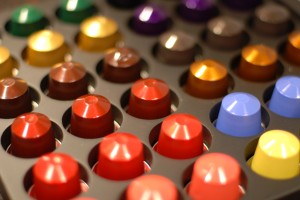Here are some thoughts on %u2018design-driven innovation%u2019 versus %u2018design as making things look cool%u2019:
Design-Driven Innovation %u2013 Nespresso from Tim Kastelle on Vimeo.
And here are some related points:
- We often think of design as making stuff look cool, but when we talk about design-driven innovation, we%u2019re actually talking about creating new categories of goods and services based on a deep understanding of what our customers are trying to do.
- With many design-driven innovations, market testing is very difficult because it is extremely hard for people to envision how the innovation will work. However, this does not mean that mean that customers are unimportant in the innovation process. It simply means that they can%u2019t tell us in advance what they want. So design-driven innovation faces higher levels of uncertainty than innovation processes trying to solve a known problem.
- The Nespresso case is apparently very popular in Europe, where the system was first launched (a full description of the way the system works can be found here). It is a great example of business model innovation (here is an excellent discussion of this). I talk about the importance of working from the espresso-making process out to the machinery instead of vice-versa %u2013 many of the innovations in the business model follow from this choice. By setting up the Nespresso Club to sell the coffee, they essentially built an iPod/iTunes style system %u2013 this model was just as innovative in coffee as it was in mp3 players.
- This is another great example of the difference between invention and innovation. The patent for the espresso capsule was granted in 1976, but the first Nespresso machine was not on the market until 1991. This is not at all unusual.
Nespresso is a pretty interesting case study. It shows some of the benefits of design-driven innovation, and the benefits of business-model innovation as well. It%u2019s pretty good coffee too.
Posted this on my design blog last year about Nespresso and did coffee making designs before. 1st as a student and 2nd as a professional. Nespresso makes clever marketing tactic in understanding the consumers' desires of owning an expensive coffee making machines as well as the love for great tasting coffee. It is basically a machine that helps one to make instant coffee but the user experience design is cunningly clever in incorporating wants into a profitable and fashionable product; that attracts a large market share. A clear example of smart product semantics.






0 comments:
Post a Comment